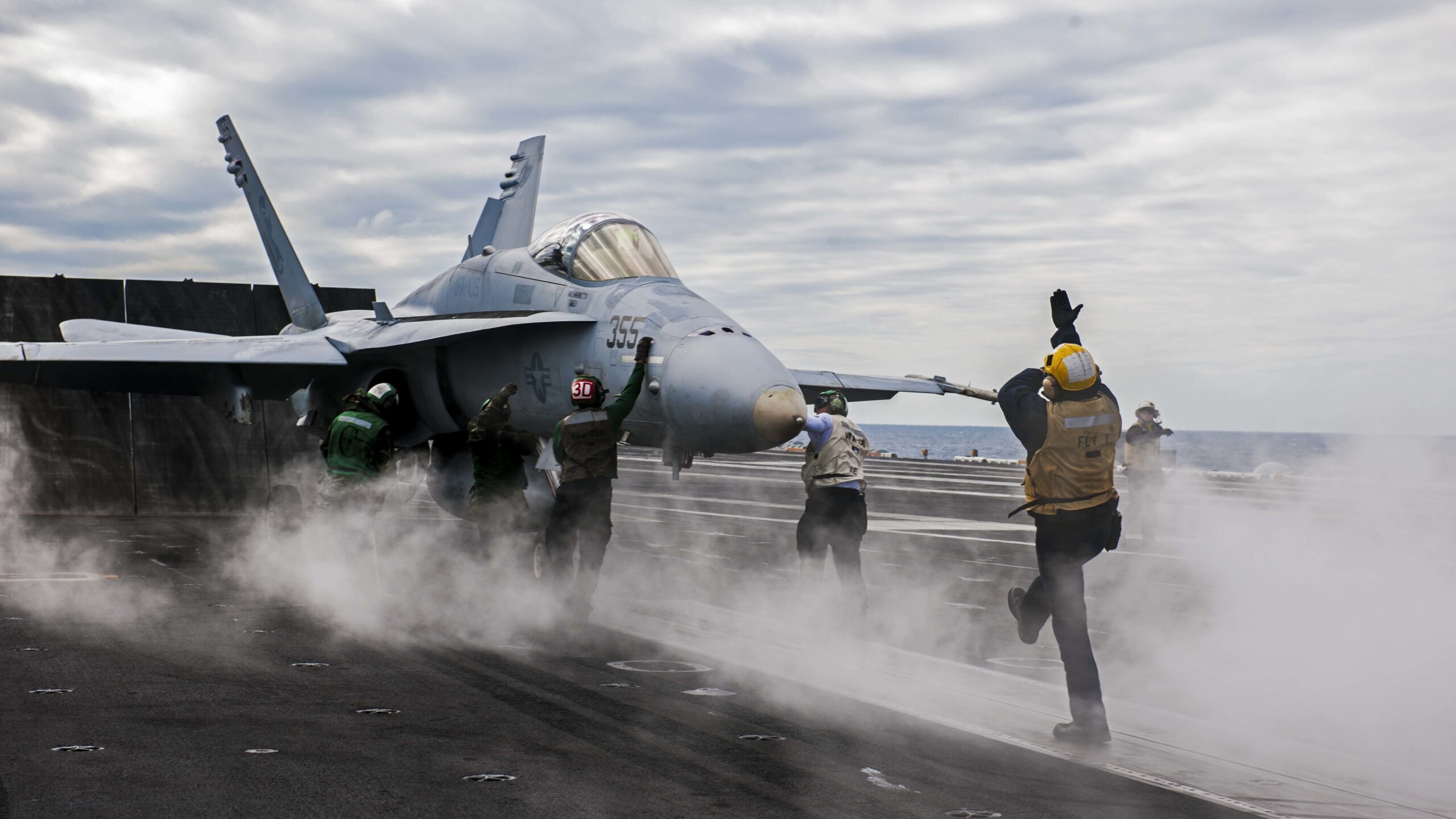
An F/A-18 Hornet assigned to the Gladiators of Strike Fighter Attack Squadron (VFA) 106 prepares to launch from the flight deck of the aircraft carrier USS Theodore Roosevelt (CVN 71). (U.S. Navy photo by Mass Communication Specialist Seaman Apprentice Alex Millar/Released)
WASHINGTON: Both the US Navy and Air Force have been struggling to keep some planes ready to fly in recent years, and it’s only getting worse, according to a new watchdog report.
“Mission capable rates — a metric used to assess the health and readiness of an aircraft fleet — and other related maintenance metrics trends have worsened since fiscal year 2015 for eight selected aircraft,” the Government Accountability Office wrote in a report published Wednesday. “While the Air Force and Navy have initiatives to address unit-level maintenance challenges, neither service has mitigated persistent fixed-wing aircraft sustainment risks.”
The watchdog agency reached those conclusions after studying the mission capable rates for eight different warplane fleets: the Air Force’s B-1B, C-5M, F-22, KC-135 and the Navy’s C-130T, KC-130T, F/A-18E/F and P-8A. The report was created in response to a House bill directing the GAO to assess mission capability rates for certain fleets since fiscal 2015 and how both services have dealt with the risk.
RELATED: What Pete ‘Maverick’ Mitchell can teach the US Air Force
GAO characterizes “mission capable” as the percentage of time an aircraft spends when it is able to “fly and perform at least one mission.” Meanwhile, aircraft may not be mission capable if it cannot fly due to waiting on required maintenance or if the unit lacks a spare part needed to repair the plane.
The mission capable rates for all eight fleets have decreased, with the F-22 and KC-130T experiencing the worst declines (both aircraft had a 16.7% drop since 2015). The F/A-18E/F (3.9%) and KC-135 (4.1%) fleets, although still in decline, had the smallest changes in mission capable rates.
While GAO credits the services with taking some action to stop the decline, such as the Navy’s implementation of its Naval Sustainment System, the watchdog found neither service has completed “sustainment reviews” for specific fleets that were required in the Fiscal Year 2017 National Defense Authorization Act.

A chart produced by the Government Accountability Office showing the change in mission capability rates for select Navy and Air Force fleets.
Air Force officials told GAO the service had not conducted the reviews yet due to ambiguity in how they initially interpreted the law but had commenced the assessments after the statute was clarified in 2021. Navy officials said they had begun addressing the requirements and expected the F/A-18E/F and P-8A reviews to be finished in FY-22 and FY-23, respectively.
“Air Force officials reported they plan to work through the backlog of the remaining systems between now and the end of fiscal year 2025,” according to the GAO report. “Navy officials reported that they anticipate completing sustainment reviews for 54 systems over the next 13 years, between now and fiscal year 2035.”
As is custom with all GAO reports, the watchdog made a series of recommendations to the Pentagon which mostly focus on both services completing their required sustainment reviews, as well as developing mitigation plans to curb the declining mission capability rates. Responding for the Defense Department, Vic Ramdass, a senior Pentagon readiness official, largely concurred with the watchdog’s recommendations.
The only recommendation Ramdass contested was that the Navy accelerate its planned assessments of each fleet, arguing the service has devised a schedule that balances a variety of programmatic needs “without creating a surge of sustainment reviews in any one year.”
Norway’s top officer on his ‘biggest challenge,’ next frigate and new NATO neighbors
Gen. Eirik Kristoffersen, Norway’s Chief of Defense, talks to Breaking Defense about his plans for spending on new frigates and subs, the challenges of upgrading Norway’s “digital backbone” and refilling the military’s stocks.


























